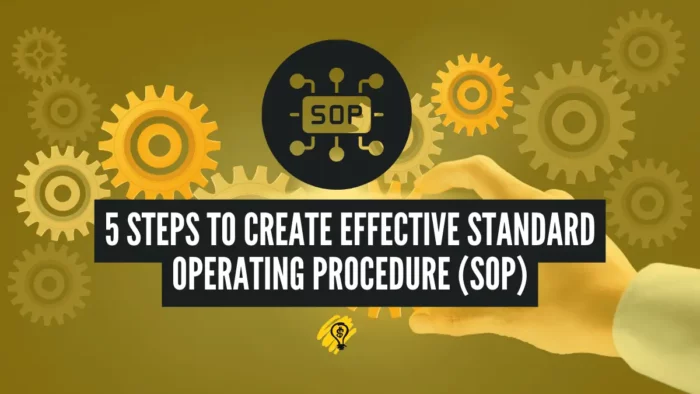Every organisation, no matter the size or the product, operates because of a range of internal procedures. The smooth and reliable operation of these procedures is essential to success, which is why standardising these procedures by using instructional documents is an important part of internal organisation. A standard operating procedure document (SOP) is an example of this kind of document, which consists of a set of instructions that outline how certain processes should take place and act as a guide for employees.
In this article, we explain how to create an effective standard operating procedure by sharing five key tips to improve efficiency.
1. Know What You Want to Achieve
There’s no point in creating a standard operating procedure if you don’t have an intention for what it will be used for. The nature of an SOP is to provide instructions for an internal process, so this will be the main purpose of the document. But you should also have an objective for the specific process that you’re outlining, which should be baked into the document.
By beginning the process of creating a standard operating procedure with a clear objective, you can make sure that all of the actions and steps you are outlining align with this overall goal. For example, if the procedure in question is safety critical your objective might be to reduce the number of accidents or errors, and therefore every stage of your standard operating procedure should have instructions relating to health and safety.
When you’re in the process of creating SOPs for all of the key procedures in your workplace, it can start to feel tiresome and like you’re losing the purpose of these documents. Making sure that you outline your objectives and being clear on the impact you want the standard operating procedures to have will not only give you a renewed focus, but also increase the likelihood that they’ll have their desired impact.
2. Outline Each Stage of the Process
Before you get into actually writing your standard operating procedure, one of the best ways to ensure that it will be as efficient as possible is to outline the process first. This gives you a clear roadmap for the entire process and makes it easier for you to get stuck in fleshing out every section.
You might be working from an existing set of guidelines to make your SOP, which will make it much easier to create an outline as you will already have an overview of what the procedure in question involves. If you’re making a procedure document from scratch, it’s very useful to begin by creating an outline instead of launching straight into writing what’s involved. This gives you an overview of what’s required and can ensure that you lay out all the necessary information properly.
When you work through an SOP stage by stage, it also makes it easier for you to identify ways that the procedure could be optimised to make it more efficient. This means that existing procedures can be improved and you’ll end up with a set of instructions which actually improve the way that things happen in your business
3. Use an SOP Template
One of the best ways to create an effective standard operating procedure is to use a template. Templates will give you a framework on which to map out your own internal procedures, making sure that you don’t miss anything important and also potentially suggesting things you could add to make your instructions better.
Another big advantage of using an SOP template is that it does all of the formatting for you, so you’re left with a smart-looking standard operating procedure without having to spend a lot of time on the design yourself. You may need to personalise this with your own branding, but when you have a template that you can just copy and paste your instructions into, it makes the whole creation process much easier.
Having a template also creates consistency across all of the SOPs you have in your business, which is better for your internal brand and also for the ease of employee comprehension. Even if you have to create the template yourself to begin with, it’s a very worthwhile approach that will improve SOP integration and use in the company and ensure that you’re covering everything that needs to be included every time.
4. Create a SOP Draft
When you’re creating important documents like SOPs, quickly getting them out in circulation and used by your employees is a priority. However, an important step in the process of creating an efficient standard operating procedure is having it reviewed and potentially tested to ensure that it works as intended, which is where a draft document comes in handy.
Once you’ve got a first draft of an SOP, you should share this with several other people at least. One of these should proofread the document, and others should have experience with the procedure in question so that they can advise as to whether it is functional.
You should also have someone follow the steps outlined in the procedure, ideally someone who isn’t as familiar with the process, to make sure that they are comprehensible. Once you’ve gotten feedback from all of these different checks, you can make changes to your draft and improve it before it gets officially released.
Related: How to Develop Standard Operating Procedure (SoP)
5. Be Concise
Our final piece of advice for creating efficient standard operating procedure documents is to try and be as concise as possible. You obviously want to make sure your instructions are thorough to avoid errors, but the more concise the document is, the easier it will be to follow.
Sharing concise instructions also reduces the likelihood of error through misinterpretation, which could lead to issues with the outcome of the procedure. So whilst you may want to write a first draft of an SOP that contains all the information you can think of, this should be edited down before it’s released so that it contains only the necessary information.





